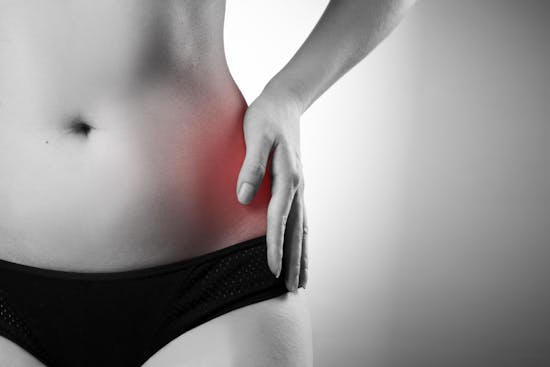
The hip is the largest joint and strongest in the human body. It is a multiaxial, synovial ball and socket joint formed between the os coxa (hip bone) and the femur. The rounded projection or ball (femoral head) at the top of the thigh bone (femur) fits into the pelvic girdle’s socket (acetabulum). Both the ball and socket are lined with cartilage, which cushion the joint. The space in each ball and socket joint is lined with a thin membrane called the synovium. The synovium cushions the joint and secretes a lubricating fluid (synovia), which reduces bone friction and help with fluid movement.
Because it’s such an amazingly complicated joint, it’s no wonder why so many people suffer from hip injuries and pain. Fortunately, the physical therapists (PTs) at Ellard Physical Therapy are experts in the evaluation and treatment of hip pain and dysfunctions. We care for people of all ages and treat a variety of muscle, joint and neurological conditions.
Conditions we have successfully treated:
- Hip Pain
- Arthritis*
- Tendonitis
- Groin Strain
- Trochanteric Bursitis
- Post Surgical Hip Replacement
What are my treatment options?
- Drugs
- Epidural Injections
- Surgery
- Physical Therapy*
Advantages of Physical Therapy:
- No side effects.
- Cost-effective.
- Supported by clinical research.*
- Customized to treat the underlying cause.
- Your Recovery Process:
- Pain Relief
- Recovery of Any Lost Hip Range of Motion
- Increased Strength
- Recovery of Walking and Functional Skills
- Independent Care
Components of Your Care:
- A thorough biomechanical evaluation.
- Extensive patient education.
- A customized treatment plan.
- Gentle hands-on techniques to relax the muscles.
- Effective joint mobilization techniques to decrease stiffness.
- Pain-relieving modalities such as ice, heat, ultrasound or electrical stimulation.
- Targeted stretching for tight muscles.
- Walking, stair climbing, sit-to-stand retraining.
- Balance exercises.
How long will it take for me to start noticing improvement in my hip pain?
Everyone is different. You may require one or two visits or an extended care plan over several weeks or months. If you’re ready for relief, and tired of “masking” your pain, treat the cause, not just the symptoms!
* Cited from the academic journal, Physical Therapy, 2005, pp. 907 – 971.
